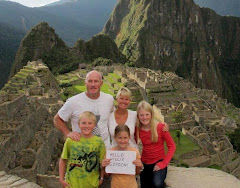+crop4+(blog).jpg) |
| Collecting seaweed & crabs on Elim Beach, near Cooktown |
When people use the word 'walkabout' today, it conjures up an aimless wandering. But for Guugu Yimithirr people it was a survival strategy, strictly governed by local lore, and its direction determined by the location of food and resources. The land is fragile so the Bama of this region moved around with the seasons, always respecting the lores governing hunting and gathering in order to protect the environment which looked after them.
.jpg) |
| Wunha plums from the nonda tree |
+blog.jpg) |
| Wattle flower |
.jpg) |
| Nanggaarr-buurra - Kapok |
This is also the time to catch stingrays and a small, yellow, black-finned shark, whose livers take on a pinkish hue to show that they're full of oil. The fish oil is really important for a healthy diet, and helped keep us physically fit. The goanna is another animal from which we extracted the oil. Their fat is thought to be particularly good for preventing arthritis, and is best extracted before they hibernate during the wet season.
All through the year nature signals to us, so we know when the barramundi are plump, when river prawns and freshwater catfish are at their best, or sea urchins and native honey ready to be collected.
Importantly, bush lore also dictates what we can not hunt, although sadly, today, this is often ignored.
 |
| Wabul - Torres Strait Pigeon |
More stories about the bush...
Bush Messengers & Fishing Made Easy
The Return of Burriwi the Emu
Picture Gallery: Guurrbi's Bush Creatures
About our tours









No comments:
Post a Comment